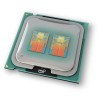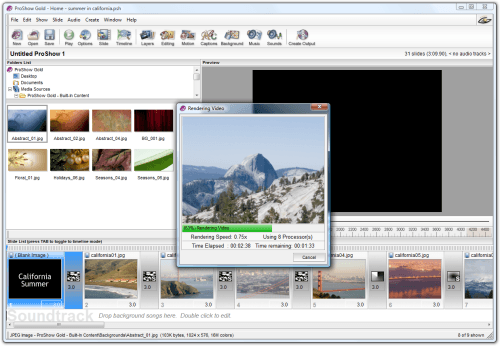- Qualcomm Launches Snapdragon 4 Gen 2 Mobile Platform
- AMD Launches Ryzen PRO 7000 Series Mobile & Desktop Platform
- Intel Launches Sleek Single-Slot Arc Pro A60 Workstation Graphics Card
- NVIDIA Announces Latest Ada Lovelace Additions: GeForce RTX 4060 Ti & RTX 4060
- Maxon Redshift With AMD Radeon GPU Rendering Support Now Available
Q9400S & Q8200S: Intel’s 65W Quad-Cores

The benefits of a low-TDP processor are obvious, but a usual downside is also obvious: low clock speeds. Intel’s changing that thinking with their Core 2 Quad “S” series, which includes the Q9550S, Q9400S and also the Q8200S. Compared to their non-“S” variants, they draw less power and run cooler, all while retaining the performance they’ve become known for.
Page 6 – Multi-Media: ProShow Gold, Sandra Multi-Media
While TMPGEnc XPress’ purpose is to convert video formats, ProShow from Photodex helps turn your collection of photos into a fantastic looking slide show. I can’t call myself a slide show buff, but this tool is unquestionably definitive. It offers many editing abilities and the ability to export in a variety of formats, including a standard video file, DVD video and even HD video.
Like TMPGEnc and many other video encoders, ProShow can take full advantage of a multi-core processor. It doesn’t support SSE4 however, but hopefully will in the future as it would improve encoding times considerably. Still, when a slide show application handles a multi-core processor effectively, it has to make you wonder why there is such a delay in seeing a wider-range of such applications on the marketplace.

Our Q9400’s and Q8200 might be the lowest on Intel’s Quad-Core totem pole, but even the Q8200 vastly improves the performance over the Dual-Cores throughout both tests here. It would be great to see more performance scaling like this throughout most of our multi-threaded applications, but sadly that’s not the case. Photodex really helped pave the way with ProShow, as it’s had great multi-threaded performance for quite a while, while larger companies are struggling to put our four cores to great use.
Sandra 2009 Multi-Media
To help show a more “raw” version of the kind of potential Nehalem offers, we ran the Multi-Media test built into Sandra. This test here stresses the CPU’s ability to handle multi-media instructions and data, using both MMX and SSE2/3/4 as the instruction sets of choice. The results are divided by integer, floating point and double precision, three specific numbering formats used commonly in multi-media work.

Although it’s difficult to gauge real worth with this benchmark, we can easily see just how much more capable our Quad-Cores are over Dual-Cores, if an application is able to properly take full advantage of them.
Support our efforts! With ad revenue at an all-time low for written websites, we're relying more than ever on reader support to help us continue putting so much effort into this type of content. You can support us by becoming a Patron, or by using our Amazon shopping affiliate links listed through our articles. Thanks for your support!






